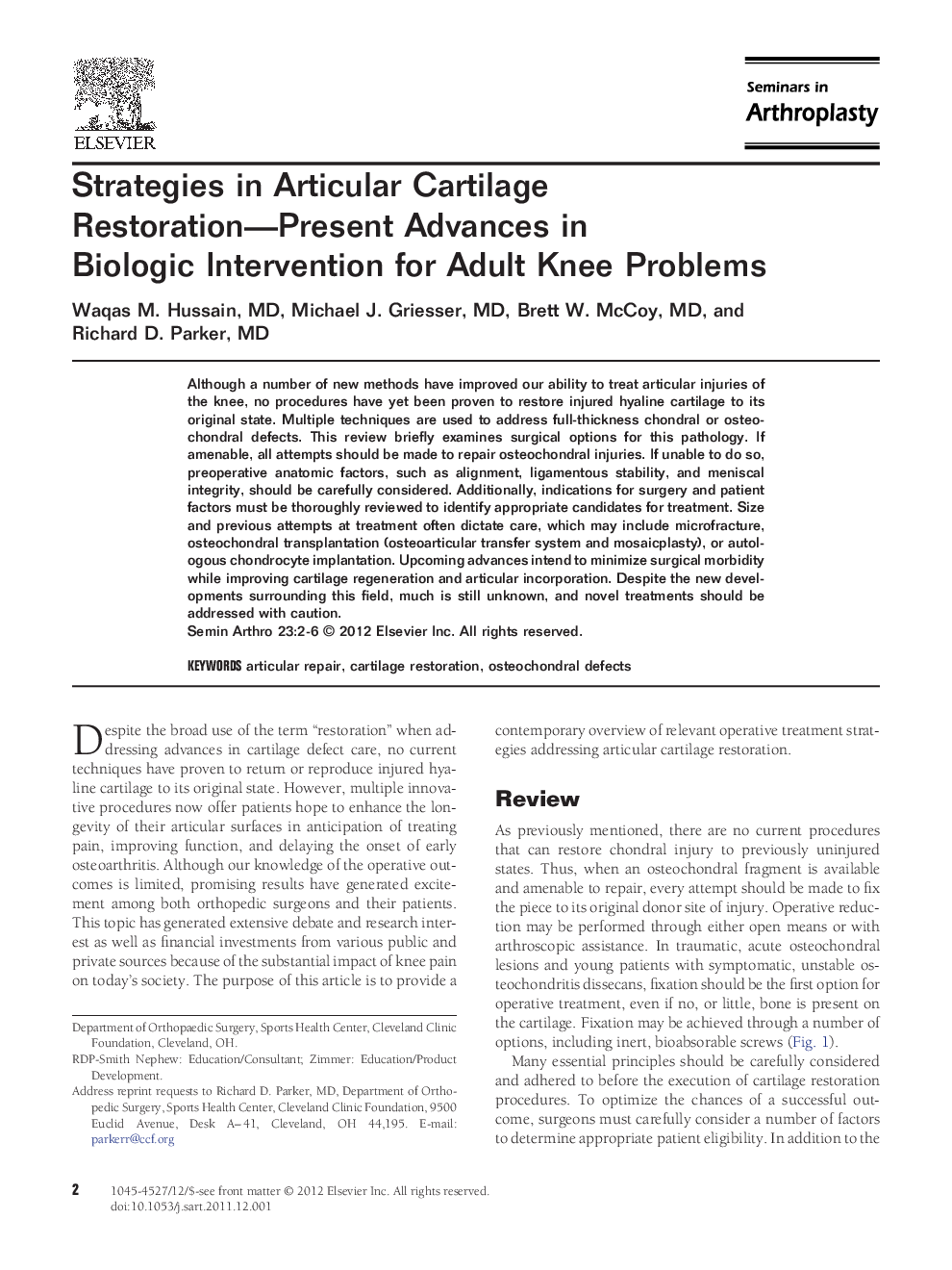| Article ID | Journal | Published Year | Pages | File Type |
|---|---|---|---|---|
| 4093919 | Seminars in Arthroplasty | 2012 | 5 Pages |
Although a number of new methods have improved our ability to treat articular injuries of the knee, no procedures have yet been proven to restore injured hyaline cartilage to its original state. Multiple techniques are used to address full-thickness chondral or osteochondral defects. This review briefly examines surgical options for this pathology. If amenable, all attempts should be made to repair osteochondral injuries. If unable to do so, preoperative anatomic factors, such as alignment, ligamentous stability, and meniscal integrity, should be carefully considered. Additionally, indications for surgery and patient factors must be thoroughly reviewed to identify appropriate candidates for treatment. Size and previous attempts at treatment often dictate care, which may include microfracture, osteochondral transplantation (osteoarticular transfer system and mosaicplasty), or autologous chondrocyte implantation. Upcoming advances intend to minimize surgical morbidity while improving cartilage regeneration and articular incorporation. Despite the new developments surrounding this field, much is still unknown, and novel treatments should be addressed with caution.
